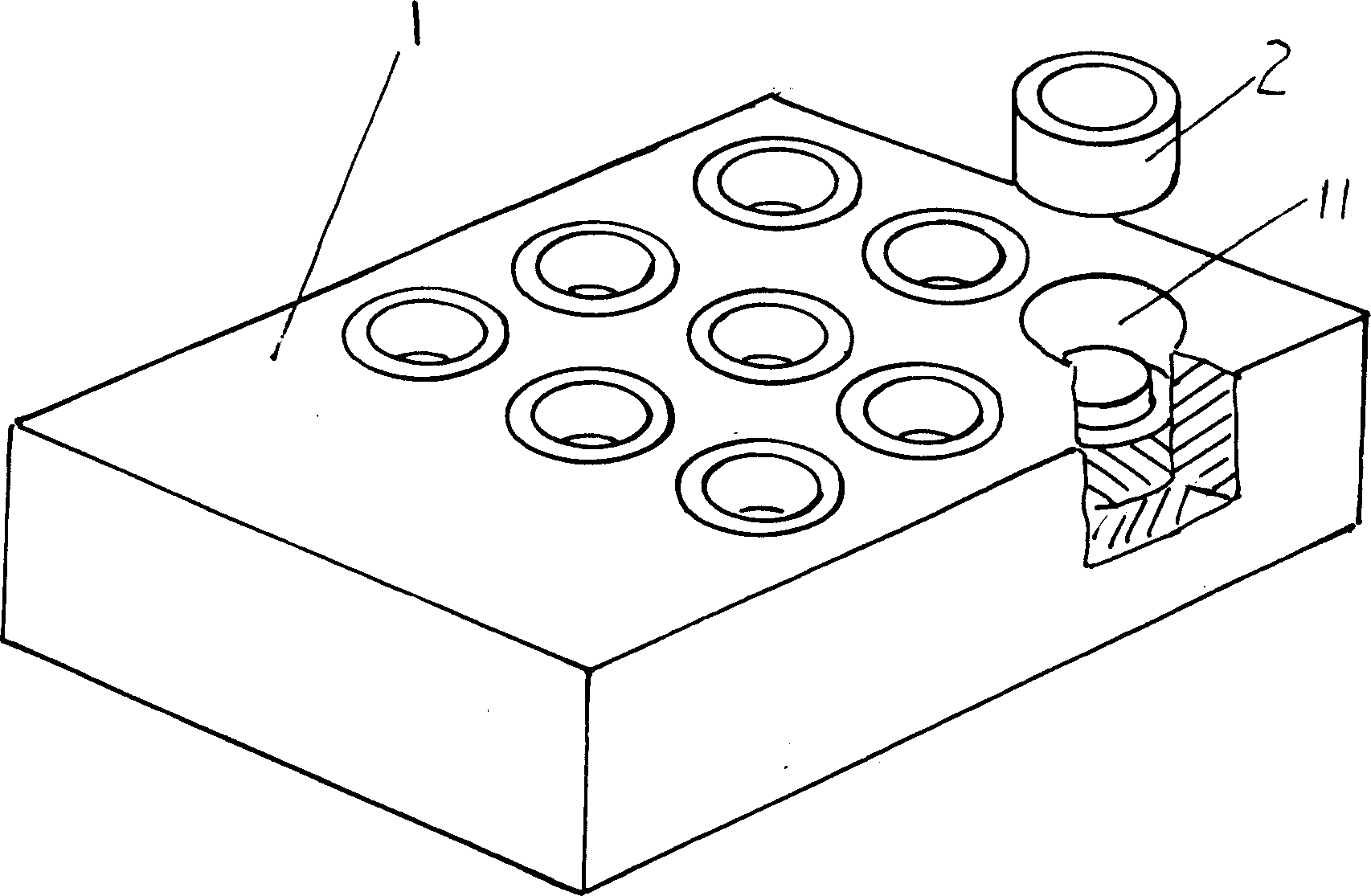Ceramic metallizing process
A ceramic metallization and metallization technology, applied in the field of ceramic metallization, can solve the problems of uncontrollable coating layer thickness, narrow adaptability, and low coating efficiency, so as to achieve easy control of coating layer thickness and improve sealing strength , The effect of improving the coating efficiency
- Summary
- Abstract
- Description
- Claims
- Application Information
AI Technical Summary
Problems solved by technology
Method used
Image
Examples
Embodiment 1
[0028] A) prepare metallization paste, take by weighing 60 parts of molybdenum powder, 25 parts of glass phase materials, and 25 parts of binder, put into a ball mill jar equipped with agate balls, place the ball mill jar on a ball mill for ball milling, the frequency of the ball mill Set at 20Hz, after 15h of ball milling, use a filter screen to separate the abrasive material from the agate balls to obtain a metallized paste for coating, for subsequent use, wherein: the glass phase material is made of the following raw materials in the following weight ratio Composed of 35 parts of alumina, 1.5 parts of calcium oxide, 20 parts of silicon dioxide, 40 parts of manganese powder, 2.5 parts of titanium powder, 2 parts of zirconium dioxide, and the binder is 20 parts of terpineol by weight Prepared with 1 part of ethyl cellulose;
[0029] B) Fixture preparation, equipped figure 1 The shown fixture 1 is made of high temperature-resistant bakelite material, and a set of ceramic subs...
Embodiment 2
[0037] The molybdenum powder in the step A), the glass phase material, the component of binder are respectively 70 parts, 40 parts, 30 parts, the frequency of ball mill 25Hz, ball milling time 20h, the aluminum oxide 23 parts in the glass phase material, calcium oxide 1.5 parts, 30 parts of silicon dioxide, 32 parts of manganese powder, 4 parts of titanium powder, 2.5 parts of zirconium dioxide, 25 parts of terpineol;
[0038]The distance between the screen plate and the ceramic substrate 1 in step D) is adjusted to 1.5mm, and the angle of the scraper is 50°;
[0039] The drying furnace temperature in step F) is 100°C for 18 minutes, and the sintering temperature is 1425°C for 60 minutes. The metallization thicknesses of the 9 devices obtained are 68um, 68um, 68.1um, 68um, 68.2um, 68um, 67.9um, 68.9um, 68.9um, and the rest are the same
[0040] Description of Example 1.
Embodiment 3
[0042] The molybdenum powder, glass phase material, and binder in step A) are 75 parts, 30 parts, and 35 parts respectively, the frequency of the ball mill is 30 Hz, the ball milling time is 25 h, 40 parts of alumina in the glass phase material, 1 part of calcium oxide, 25 parts of silicon dioxide, 30 parts of manganese powder, 2 parts of titanium powder, 3.5 parts of zirconium dioxide, 30 parts of terpineol;
[0043] The distance between the screen plate and the ceramic substrate 1 in step D) is adjusted to 2 mm, and the angle of the scraper is 60°;
[0044] The drying furnace temperature in step F) is 120° C. for 15 minutes, and the sintering temperature is 1400° C. for 50 minutes.
[0045] The measured metallization thickness of the device is 66um, 66.2um, 66um, 66.1um, 66.2um, 66um, 66.2um, 66um, 66um, and the rest are the same as the description of Example 1.
PUM
 Login to View More
Login to View More Abstract
Description
Claims
Application Information
 Login to View More
Login to View More - R&D
- Intellectual Property
- Life Sciences
- Materials
- Tech Scout
- Unparalleled Data Quality
- Higher Quality Content
- 60% Fewer Hallucinations
Browse by: Latest US Patents, China's latest patents, Technical Efficacy Thesaurus, Application Domain, Technology Topic, Popular Technical Reports.
© 2025 PatSnap. All rights reserved.Legal|Privacy policy|Modern Slavery Act Transparency Statement|Sitemap|About US| Contact US: help@patsnap.com

